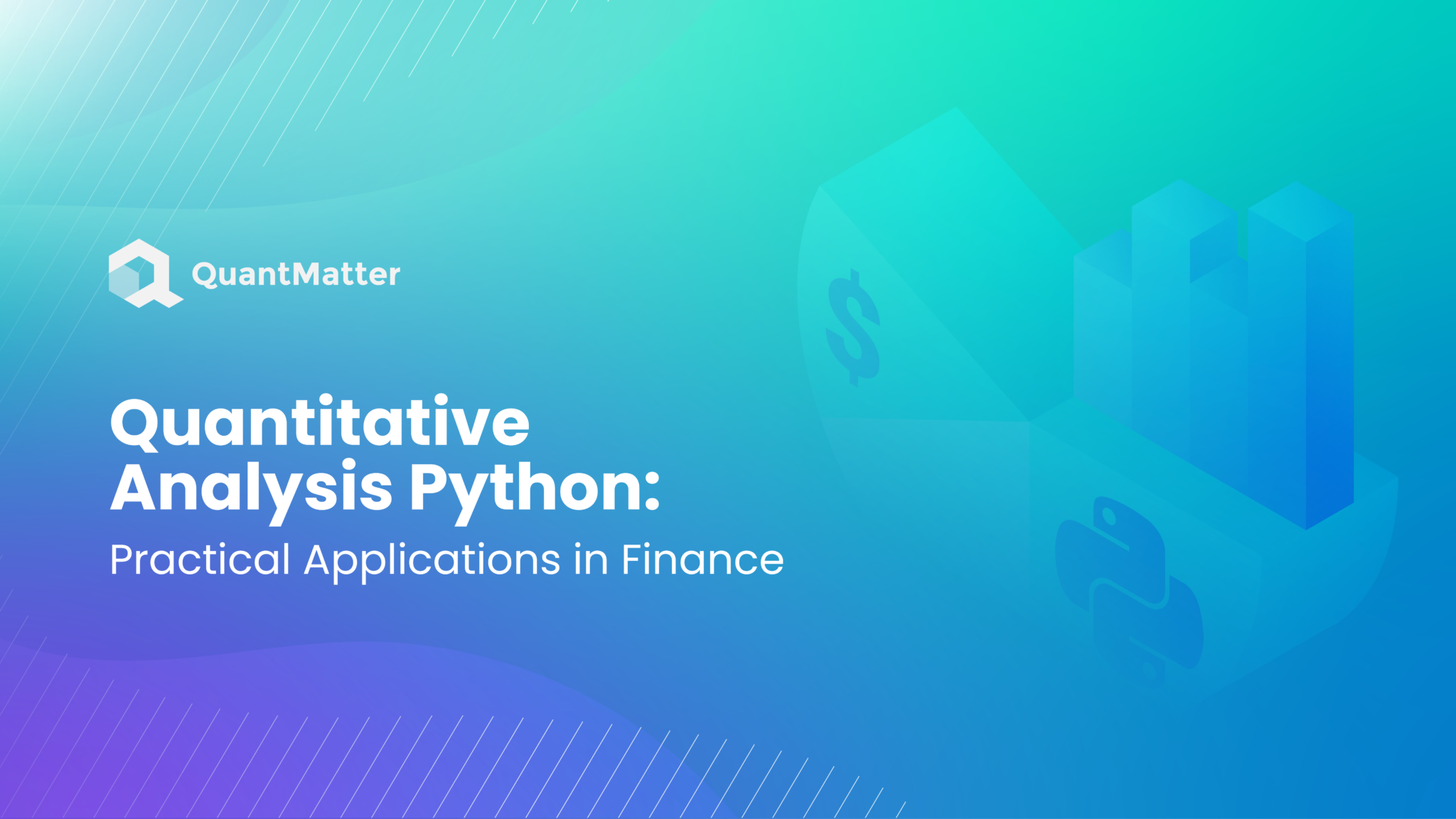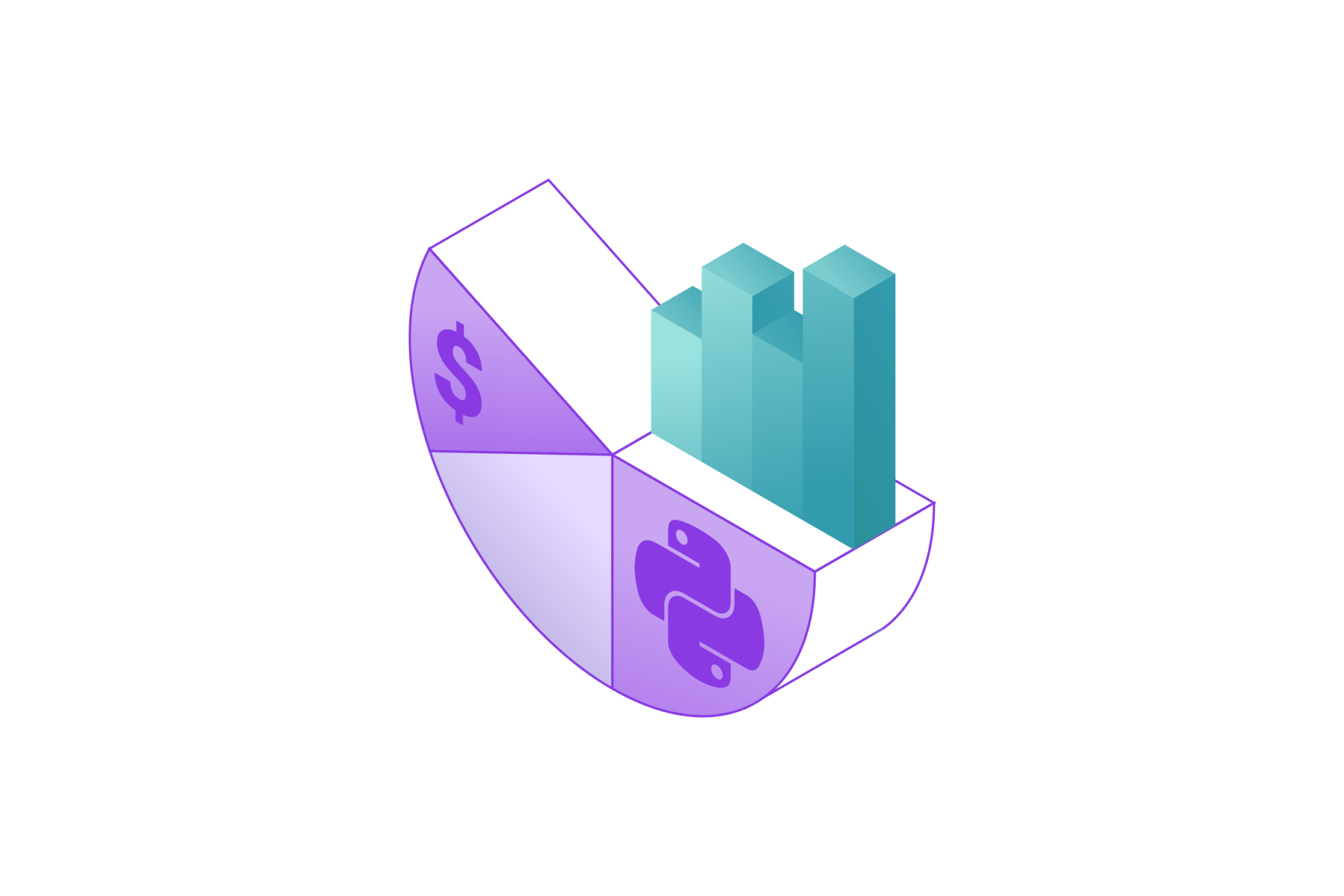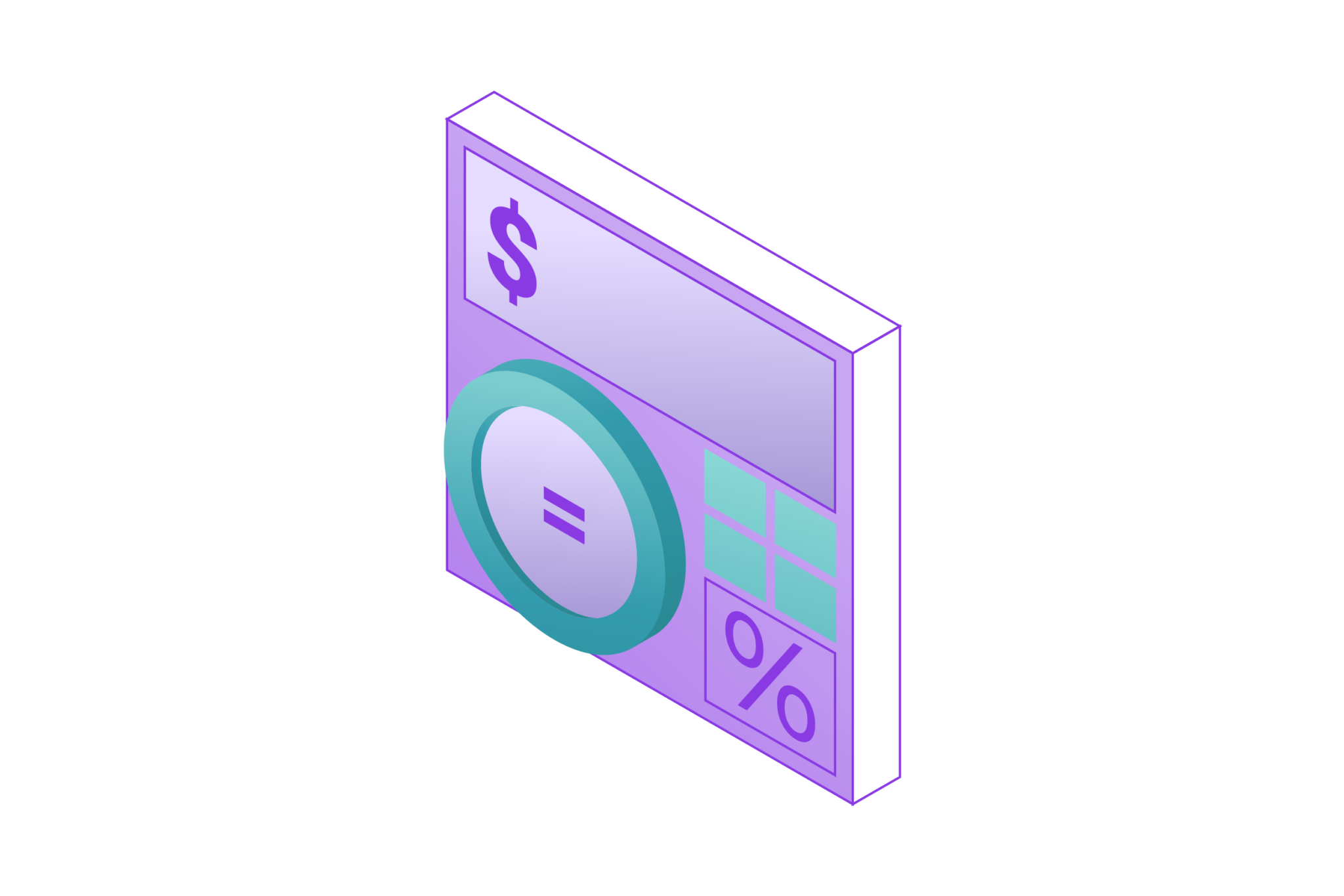
Quantitative analysis is a crucial aspect of modern finance. It involves the use of mathematical and statistical methods to evaluate financial instruments, investment strategies, and market behavior. By analyzing numerical data, finance professionals can make informed decisions, manage risks, and optimize portfolios.
Python has emerged as a popular programming language for quantitative analysis due to its simplicity, versatility, and extensive library support. Unlike traditional tools like Excel or MATLAB, Python offers a more flexible and powerful environment for handling large datasets and performing complex calculations. Its open-source nature and active community also contribute to its growing adoption in the finance industry.
In this article, we will explore the practical applications of Python in quantitative analysis within the realm of finance. We will guide you through the setup of your Python environment, introduce essential libraries, and demonstrate how to analyze financial data and optimize investment portfolios. Whether you are a beginner or an experienced finance professional, this guide will provide valuable insights into leveraging Python for quantitative analysis.
Setting Up Your Python Environment

Before diving into quantitative analysis, it’s essential to set up a Python environment equipped with the necessary tools and libraries. This section will guide you through each step to ensure you are ready to start analyzing financial data with Python.
Step 1: Install Python
The first step is to install Python on your computer. Python is a powerful and versatile programming language that is easy to learn and widely used in various fields, including finance. To install Python, visit the official Python website (python.org) and download the latest version suitable for your operating system. The website provides detailed instructions for installation on Windows, macOS, and Linux. Follow these instructions carefully to ensure Python is correctly installed on your system.
Step 2: Install Anaconda
Anaconda is a popular distribution of Python that simplifies the installation and management of libraries and dependencies. It includes many useful libraries for data science and quantitative analysis, making it an ideal choice for financial analysis projects. To install Anaconda, go to the Anaconda website and download the installer for your operating system. The installer will guide you through the setup process, which typically involves accepting the license agreement, selecting the installation location, and choosing whether to add Anaconda to your system PATH. Once installed, Anaconda provides a convenient graphical interface (Anaconda Navigator) for managing your Python environment and libraries.
Step 3: Create a Virtual Environment
Creating a virtual environment is an essential practice in Python programming. It helps isolate your project’s dependencies, preventing conflicts with other projects and maintaining a clean workspace. To create a virtual environment, open the Anaconda Prompt (Windows) or your terminal (macOS/Linux). Then, use the conda command to create and activate a new environment. Choose a meaningful name for your environment, such as quant_env, and specify the Python version you want to use. This step ensures that all the libraries and dependencies you install will be contained within this environment, keeping your main Python installation uncluttered.
Also Read: Systematic Trading Strategies: Bridging Technology and Markets
Step 4: Install Essential Libraries
With your virtual environment set up, the next step is to install the essential libraries needed for quantitative analysis. These libraries provide powerful tools for numerical computations, data manipulation, and visualization. Key libraries include:
- NumPy: A fundamental package for numerical computations in Python. NumPy provides support for arrays, matrices, and many mathematical functions.
- Pandas: A library for data manipulation and analysis. Pandas offer data structures like DataFrame, which makes it easy to handle and analyze structured data.
- Matplotlib and Seaborn: Libraries for data visualization. Matplotlib is a versatile plotting library, while Seaborn builds on Matplotlib and provides a high-level interface for creating attractive and informative statistical graphics.
- JupyterLab: An interactive development environment that allows you to create and share documents containing live code, equations, visualizations, and narrative text.
Using the Anaconda Prompt or terminal, you can install these libraries within your virtual environment. This step ensures you have all the tools you need to start analyzing financial data with Python.
Step 5: Verify the Installation
To verify that everything is set up correctly, open JupyterLab from the Anaconda Navigator or by typing jupyter lab in the Anaconda Prompt or terminal. JupyterLab provides a user-friendly interface for writing and running Python code. Create a new notebook and try importing the installed libraries by writing import statements for NumPy, Pandas, Matplotlib, and Seaborn. If there are no errors, your environment is correctly set up, and you are ready to begin your journey into quantitative analysis with Python.
This preparation phase is crucial as it ensures you have a solid foundation to build upon. With your Python environment ready, you can now focus on learning and applying quantitative analysis techniques to real-world financial data.
Basic Python Libraries for Quantitative Analysis

To perform quantitative analysis effectively in Python, it’s crucial to understand the primary libraries that will facilitate your work. These libraries provide the necessary tools for numerical computations, data manipulation, statistical analysis, and visualization. In this section, we will explore the most commonly used libraries and their functionalities.
NumPy: Numerical Python
NumPy, short for Numerical Python, is a fundamental package for scientific computing with Python. It provides support for arrays, matrices, and a collection of mathematical functions to operate on these data structures. NumPy’s array object, ndarray, is particularly powerful for handling large datasets and performing complex calculations efficiently.
NumPy’s capabilities extend beyond simple array manipulations. It includes functions for linear algebra, Fourier transforms, and random number generation, making it an indispensable tool for quantitative analysis. For example, you can use NumPy to create and manipulate arrays of stock prices, calculate returns, and perform statistical analysis on financial data.
Pandas: Data Manipulation and Analysis
Pandas is a powerful library for data manipulation and analysis, built on top of NumPy. It introduces two primary data structures: Series and DataFrame. A Series is a one-dimensional labeled array, while a DataFrame is a two-dimensional labeled data structure, similar to a table in a relational database or a spreadsheet.
Pandas excels at handling and analyzing structured data. It provides functionalities for reading data from various file formats (CSV, Excel, SQL databases), cleaning and transforming data, and performing complex data manipulations with ease. For instance, you can use Pandas to load historical stock prices, clean the data by handling missing values, and aggregate the data to calculate monthly or yearly returns.
Matplotlib and Seaborn: Data Visualization
Visualization is a crucial aspect of quantitative analysis, as it helps to convey insights and patterns in the data effectively. Matplotlib is a versatile plotting library in Python that enables you to create a wide range of static, animated, and interactive visualizations. With Matplotlib, you can create line plots, scatter plots, bar charts, histograms, and more.
Seaborn is built on top of Matplotlib and provides a high-level interface for creating attractive and informative statistical graphics. It simplifies the process of creating complex visualizations and integrates well with Pandas data structures. Seaborn is particularly useful for creating plots such as heatmaps, box plots, and violin plots, which are commonly used in statistical analysis.
Scipy: Advanced Scientific Computing
SciPy builds on NumPy and provides additional functionalities for scientific and technical computing. It includes modules for optimization, integration, interpolation, eigenvalue problems, and other advanced mathematical operations. SciPy is especially useful for tasks that require more sophisticated numerical methods than those provided by NumPy.
In quantitative analysis, you can use SciPy for tasks such as curve fitting, numerical integration, and solving differential equations. For example, it can be used to optimize investment portfolios by minimizing risk or maximizing returns through advanced optimization techniques.
Statsmodels: Statistical Modeling
Statsmodels is a library dedicated to statistical modeling and econometrics. It provides classes and functions for estimating and testing statistical models, including linear regression, logistic regression, time series analysis, and more. Statsmodels offers extensive support for statistical tests and data exploration.
For financial analysis, Statsmodels can be used to model time series data, perform hypothesis testing, and evaluate the performance of different investment strategies. Its comprehensive suite of statistical tools makes it a valuable addition to your quantitative analysis toolkit.
These libraries form the backbone of quantitative analysis in Python. By mastering their functionalities, you will be well-equipped to handle a wide range of financial data analysis tasks, from basic data manipulation to advanced statistical modeling.
Financial Data Analysis with Python

Analyzing financial data is a core aspect of quantitative analysis, and Python provides robust tools for handling and analyzing this data efficiently. In this section, we will walk through the process of acquiring, cleaning, and analyzing financial data using Python.
Acquiring Financial Data
The first step in financial data analysis is to acquire relevant data. There are various sources from which you can obtain financial data, such as stock prices, trading volumes, and economic indicators. Some popular sources include:
- Yahoo Finance: Provides historical stock price data and financial metrics.
- Alpha Vantage: Offers a wide range of financial data, including real-time and historical data for stocks, forex, and cryptocurrencies.
- Quandl: A platform that provides access to financial, economic, and alternative data.
These data sources can be accessed through APIs, which allow you to programmatically retrieve data and integrate it into your Python workflows. Using APIs ensures that you have up-to-date and comprehensive data for your analysis.
Cleaning Financial Data
Raw financial data often contains missing values, outliers, and other inconsistencies that need to be addressed before analysis. Cleaning the data ensures that the analysis results are accurate and reliable. Pandas provides powerful tools for data cleaning and transformation. Common data cleaning tasks include:
- Handling Missing Values: Filling in missing values or removing rows/columns with missing data to maintain data integrity.
- Removing Duplicates: Ensuring that there are no duplicate entries in the dataset to avoid skewed analysis results.
- Data Type Conversion: Converting data to appropriate types, such as dates and numerical values, which is essential for accurate analysis.
- Data Normalization: Scaling data to a consistent range for analysis, which is particularly important when comparing different datasets.
Analyzing Financial Data
Once the data is clean, you can perform various analyses to gain insights and make informed decisions. Some common types of analysis include:
- Descriptive Statistics: Calculating summary statistics such as mean, median, standard deviation, and correlation to understand the distribution and relationships in the data. This helps in identifying central tendencies and variability within the data.
- Time Series Analysis: Analyzing temporal patterns in data, such as trends and seasonality, which is crucial for forecasting future values. Understanding time-based trends is essential for making predictions and informed decisions.
- Return Analysis: Calculating returns on investments, including simple returns and log returns, to assess the performance of financial assets. This analysis helps in evaluating the profitability of investments over time.
- Risk Analysis: Measuring risk through metrics such as volatility, Value at Risk (VaR), and Sharpe ratio to evaluate the risk-adjusted performance of investments. Understanding risk is vital for making balanced investment decisions.
Visualization of Financial Data
Visualizing financial data helps to identify patterns, trends, and anomalies that may not be apparent from raw data alone. Matplotlib and Seaborn are excellent libraries for creating a wide range of visualizations.
- Line Plots: Ideal for displaying time series data such as stock prices and returns. Line plots help in visualizing trends over time.
- Histograms: Useful for showing the distribution of returns and other financial metrics. Histograms provide a clear view of data distribution and frequency.
- Heatmaps: Effective for visualizing correlations between multiple financial variables. Heatmaps make it easy to identify relationships and dependencies among variables.
- Box Plots: Helpful for identifying outliers and understanding the spread of data. Box plots provide insights into the variability and distribution of data.
By following these steps, you can effectively acquire, clean, analyze, and visualize financial data using Python. This process forms the foundation of quantitative analysis in finance and enables you to derive meaningful insights from complex datasets.
Case Study: Portfolio Optimization Using Python
Portfolio optimization is a critical task in quantitative finance, aimed at maximizing returns while minimizing risk. Python, with its powerful libraries, provides an effective toolkit for performing portfolio optimization. In this section, we will walk through a practical example of portfolio optimization using Python.
Understanding Portfolio Optimization
Portfolio optimization involves selecting the best mix of assets to achieve a desired return while minimizing risk. The most common method used is the Modern Portfolio Theory (MPT), developed by Harry Markowitz. MPT uses diversification to construct an efficient frontier of optimal portfolios that offer the highest expected return for a defined level of risk.
Steps in Portfolio Optimization
- Define the Investment Universe: Begin by selecting the assets you want to include in your portfolio. This could be a mix of stocks, bonds, and other financial instruments. The choice of assets depends on your investment goals and risk tolerance.
- Gather Historical Data: Obtain historical price data for the selected assets. This data is essential for calculating returns, risk, and correlations between assets. Reliable sources for historical financial data include Yahoo Finance, Alpha Vantage, and Quandl.
- Calculate Returns and Risk: Calculate the historical returns and risk (standard deviation) for each asset. This involves computing the periodic returns (daily, monthly, yearly) and their variability over time. The mean return represents the expected return, while the standard deviation measures the risk associated with the asset.
- Compute the Covariance Matrix: The covariance matrix is crucial for understanding how the returns of different assets move together. It measures the degree to which the returns of two assets are correlated. A positive covariance indicates that the assets tend to move in the same direction, while a negative covariance suggests they move in opposite directions.
- Formulate the Optimization Problem: The goal is to find the asset weights that maximize the expected return for a given level of risk. This involves solving a mathematical optimization problem where the objective is to maximize the portfolio return subject to constraints such as the sum of weights being equal to one and possibly other constraints like budget or risk limits.
- Use Optimization Algorithms: Python provides several libraries, such as SciPy and CVXPY, that include optimization algorithms to solve the portfolio optimization problem. These algorithms find the optimal weights for each asset in the portfolio that lie on the efficient frontier.
Also Read: What Is Bayesian Statistics? A Complete Guide for Beginners
- Evaluate the Optimized Portfolio: Once the optimal weights are determined, evaluate the performance of the optimized portfolio. This includes calculating the expected return, risk, and Sharpe ratio, which measures the risk-adjusted return. Compare these metrics with those of the individual assets and other portfolio combinations.
- Rebalancing the Portfolio: Portfolio optimization is not a one-time process. It requires regular rebalancing to adjust for changes in market conditions, asset performance, and investment goals. Rebalancing ensures that the portfolio remains aligned with the desired risk-return profile.
Practical Example
Let’s consider a practical example where we optimize a portfolio consisting of five different stocks. We would start by collecting historical price data for these stocks, calculate their returns and risks, and then use Python’s optimization libraries to determine the optimal asset weights. Finally, we would evaluate the performance of the optimized portfolio.
In practice, portfolio optimization can be a complex and dynamic process, but Python’s robust ecosystem of libraries and tools makes it accessible and manageable. By following the steps outlined above, you can leverage Python to construct and maintain an optimized investment portfolio that aligns with your financial objectives.
Conclusion
Python’s role in finance has grown significantly, becoming an indispensable tool for quantitative analysis due to its flexibility, ease of use, and powerful libraries. Its ability to handle sophisticated data manipulation, analysis, and visualization enables finance professionals to derive deeper insights and make informed decisions. As financial markets become more complex and data-driven, the demand for quantitative analysis skills and Python proficiency will continue to rise, making it essential for finance professionals to stay updated with these tools.
The future of quantitative analysis in finance will likely see the integration of more advanced techniques and technologies, such as machine learning, artificial intelligence, and big data analytics. Python, with its extensive ecosystem of libraries, is at the forefront of this transformation, allowing finance professionals to build predictive models, automate trading strategies, and uncover hidden patterns in vast datasets. Embracing these advanced techniques will enhance decision-making and open new opportunities for innovation and growth in the finance sector.
Continuous learning and adaptation are crucial for staying relevant and competitive in the dynamic field of quantitative analysis. Keeping up with the latest developments in Python libraries, statistical methods, and financial theories is essential for maintaining a cutting-edge skill set. By leveraging the knowledge and skills gained from this guide, finance professionals can drive better financial outcomes, manage risks more effectively, and stay ahead in a competitive landscape. The future holds immense potential for quantitative analysis in finance, driven by technological advancements and the growing availability of data.
Disclaimer: The information provided by Quant Matter in this article is intended for general informational purposes and does not reflect the company’s opinion. It is not intended as investment advice or a recommendation. Readers are strongly advised to conduct their own thorough research and consult with a qualified financial advisor before making any financial decisions.

Joshua Soriano
As an author, I bring clarity to the complex intersections of technology and finance. My focus is on unraveling the complexities of using data science and machine learning in the cryptocurrency market, aiming to make the principles of quantitative trading understandable for everyone. Through my writing, I invite readers to explore how cutting-edge technology can be applied to make informed decisions in the fast-paced world of crypto trading, simplifying advanced concepts into engaging and accessible narratives.
- Joshua Soriano#molongui-disabled-link
- Joshua Soriano#molongui-disabled-link
- Joshua Soriano#molongui-disabled-link
- Joshua Soriano#molongui-disabled-link
